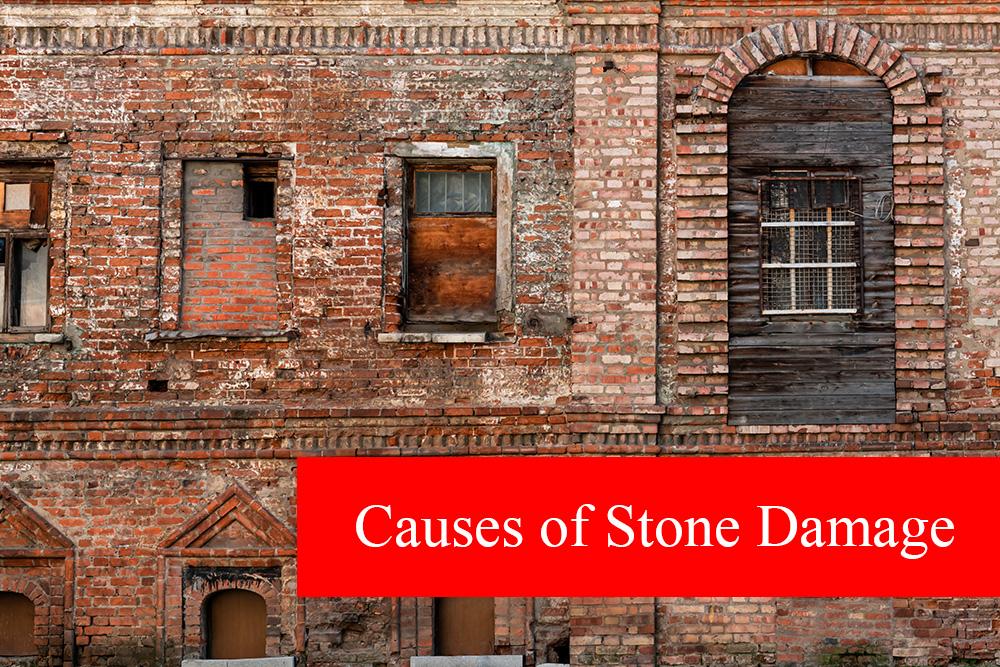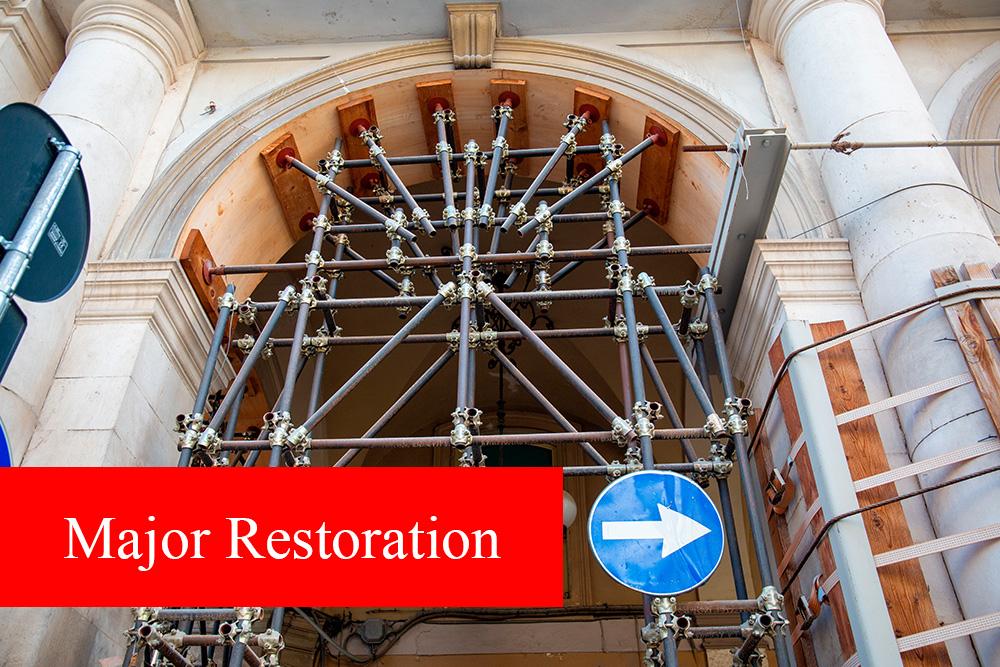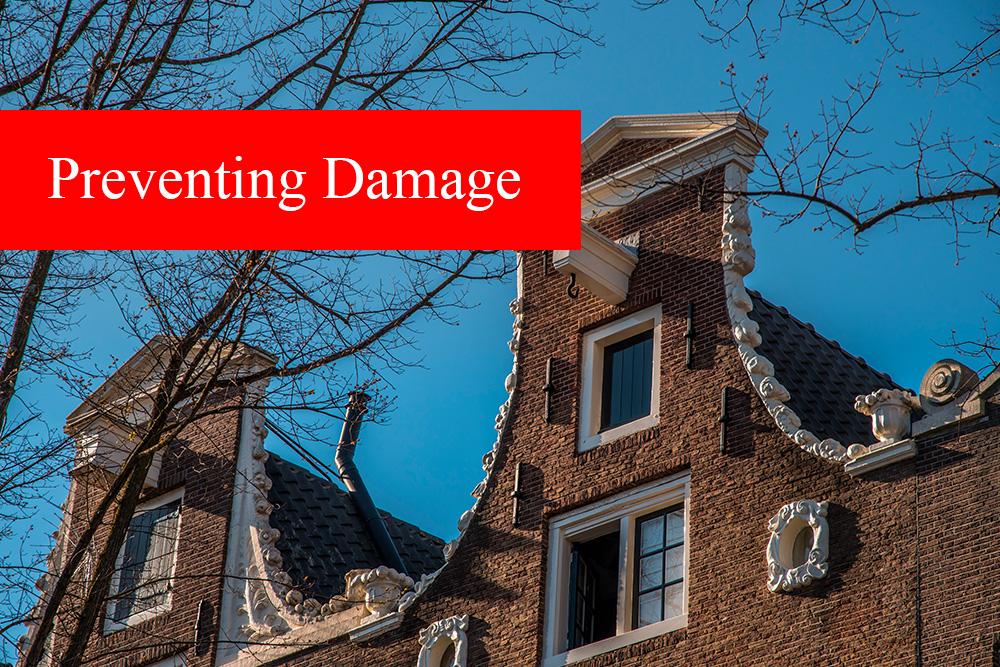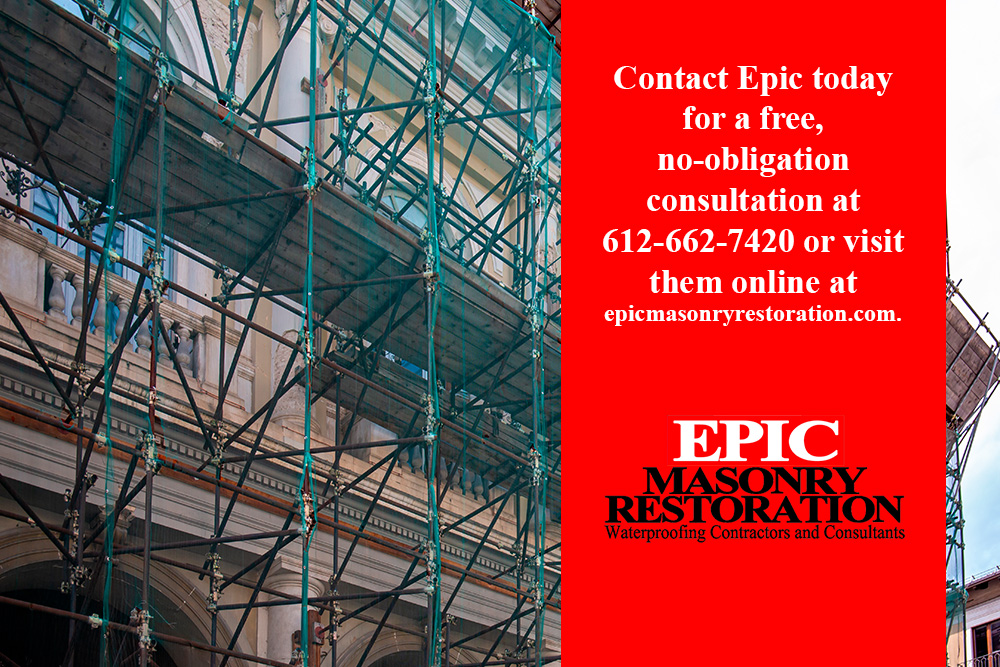Natural and cast stone are utilized as building materials due to their extreme durability and aesthetically pleasing appearance. However, while it is one of the most durable building materials ever used, natural stone is not indestructible and can suffer damage for various reasons. Cast stones, meaning those fabricated from concrete and some type of stone aggregates like crushed marble, limestone, or granite, are more susceptible to damage as these tend to be softer and fracture more easily than natural stone. Stone repair and restoration is a highly effective solution for damaged natural and cast stone and will restore the stone to its original appearance.
Causes of Stone Damage

Natural stone can suffer damage from environmental factors such as moisture and freezing temperatures. If there is even the smallest breach on the surface, moisture can easily infiltrate the stone and cause the stone to crack or split as the moisture freezes, and the ice expands. Impact from storm debris and structural cracks from earthquakes can also cause damage. Cast stones are even more susceptible to damage as the concrete used in fabrication tends to absorb moisture more readily. Cast stones are also softer than natural stone, so they can fracture more easily. However, there is more to stone restoration than just repairing damaged stones. Many stone masonry restoration procedures focus on removing the natural accumulation of debris that results from environmental factors, including the oxidative process that gives stones a worn and lackluster look. Vandalism in the form of paint or graffiti is usually easy to remove with proper cleaning methods and much more cost-effective than a complete replacement that is often unwarranted.
Benefits Of Restoration
There are several advantages to having a stone structure professionally restored, and commercial masonry contractors have the skills needed to return your stonework to its original condition. Restoring stonework will significantly enhance the curb appeal and the property value of your building. More importantly, if the stonework has physical damage, the restoration process will not only bring back the beauty of the structure, but the structural integrity of the building as well. Stone restoration can also be seen as a maintenance procedure done as a means to prevent more extensive damage.
Minor Restoration
Minor restoration cases do not warrant a comprehensive replacement of the stones and can therefore be done for significantly less cost. Paint, oxidation, and staining can be removed with cleaning products and processes. However, performing these procedures improperly will often cause more damage. Aggressive tools, like stiff wire brushes, will remove paint and graffiti but can cause surface scratching if not used properly. Acid cleaners are very effective at removing many contaminants, but these can result in damage such as discoloration, etching, and pitting of the stone surface that can lead to cracking. This is why it is crucial to hire a commercial masonry contractor with the experience and skill to ensure the job is done correctly.
Major Restoration

Regrettably, most stonemasons no longer take the time, nor have the skills, to precisely shape a replacement stone that will be suitable for a historic building. They instead tend to use patching compounds and dyes in masonry stone repair in a misguided attempt to fix issues in the existing stonework. This often results in a poorly matched and noticeable repair that is neither structurally sound nor attractive. These repairs are short-term fixes at best and cost more money in the long run because the repair has to be performed more than once. Additionally, when a patch fails, it often damages the surrounding stonework, creating a more dangerous condition and requiring an even more expensive repair. The only way to properly repair damaged stonework is to completely remove the damaged stone and fabricate a new piece. Of course, this type of stone repair requires a mason with a good deal of skill and experience to fabricate a new stone that will look as if it had always been there. Following are the steps required to properly restore commercial masonry:
1) Evaluating the Damage
Repairing only what is actually damaged both keeps that cost down and preserves as much of the original stonework as possible. A good rule of thumb is to only replace stone that is either damaged or worn down more than one inch. Of course, the question is knowing where to stop, and this is best addressed by taking the least intrusive approach possible.
2) Removing Damaged Stones
Commercial masonry contractors have experience using various specialized tools to remove the broken stones without damaging the surrounding units. Tools include diamond blade saws and grinders and special hammers and chisels designed to remove small pieces of stone without damaging the surrounding structure.
3) Finding Replacement Stone
The most difficult step in any stonework repair is finding a stone that is an appropriate match to the damaged unit. The stone used in most historic buildings typically came from a local or regional supplier that procured the stones from the same quarry, so local suppliers may help find suitable replacement stones. If this is not an option, an architectural salvage company may be able to find a raw stone reasonably close to the original.
4) Fabricating New Stone
The mason cuts the new stone to roughly the same shape and size as the damaged stone using the special tools. The replacement stone must have an additional buffer on its face so the surface can be worked with a hammer and chiseled to create the same texture to match the existing stone. Cast stones may be harder to replicate if ready-made replacements cannot be found. One way to reproduce a cast stone is by making a plaster mold of an undamaged unit, filling it with the concrete and aggregate compound, and painting it to match the existing stonework.
5) Setting the New Stones
After fabrication, the new stones are set into the cavity, and new mortar is mixed to match the existing mortar. Depending on the age of the building, and if the mortar is lime or cement based, the new mortar must be of the same physical composition as the old mix, so the pressure between the old and new mortar will be equal. If this step is not done correctly, the mortar of greater density can place pressure on the lower density mortar, causing it to fail.
Preventing Damage

Regular maintenance can postpone the need for minor restoration work and even prevent the need for major repairs. Preventative maintenance includes regular professional cleaning and the proper application of breathable sealers that will prevent moisture intrusion while allowing the stonework to breathe and let moisture vapor out.
Stone masonry restoration is always the better and less expensive option than stone repair, and regular maintenance goes a long way towards preventing major damage. If your commercial stonework building requires attention, be sure to consult a contractor with the skill and experience to restore your stonework properly. Epic Masonry Restoration has years of experience executing restorations and repairs on commercial and historic stone buildings in the greater St. Paul and Minneapolis metro area. Contact Epic today for a free, no-obligation consultation at 612-662-7420 or visit them online at epicmasonryrestoration.com.

